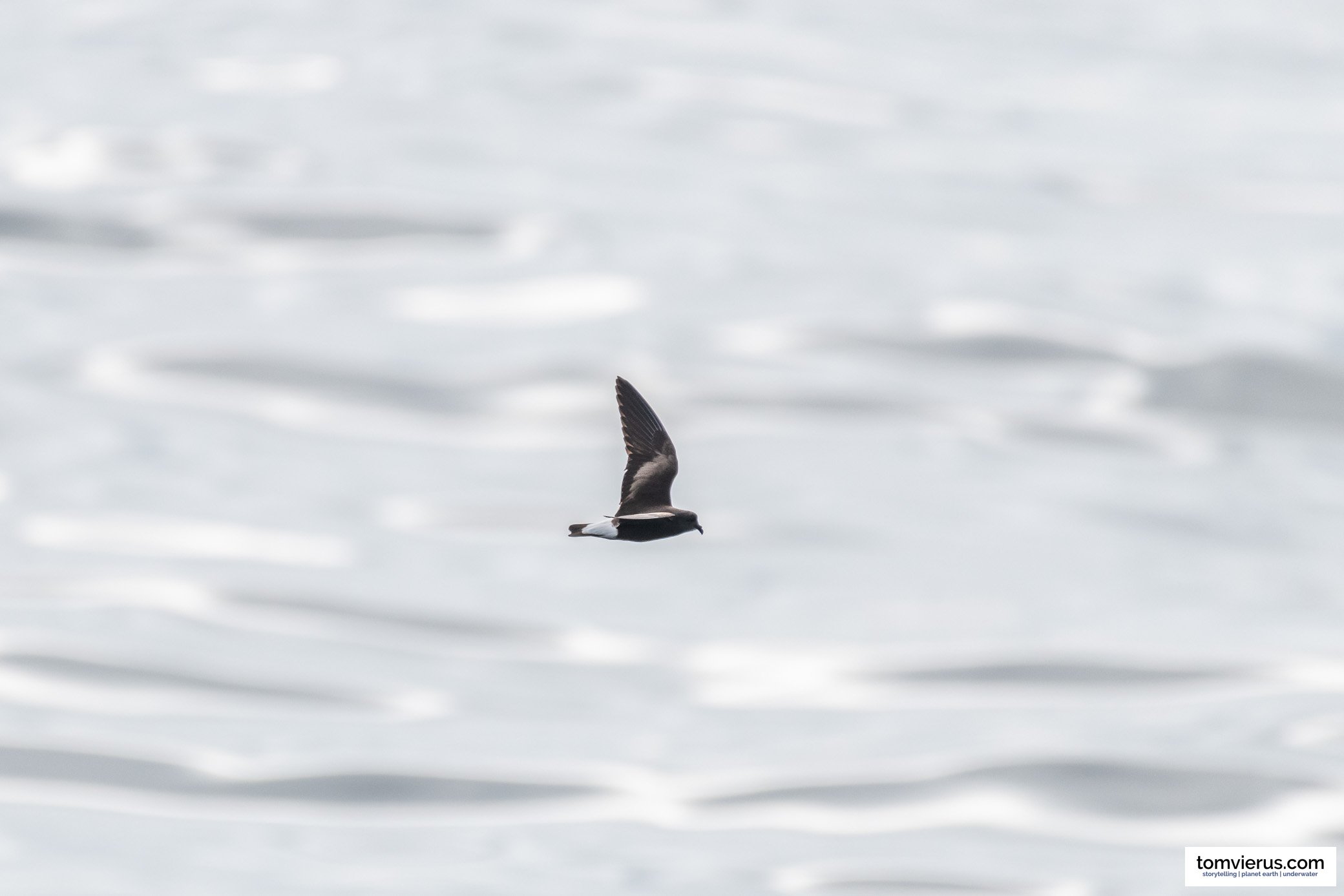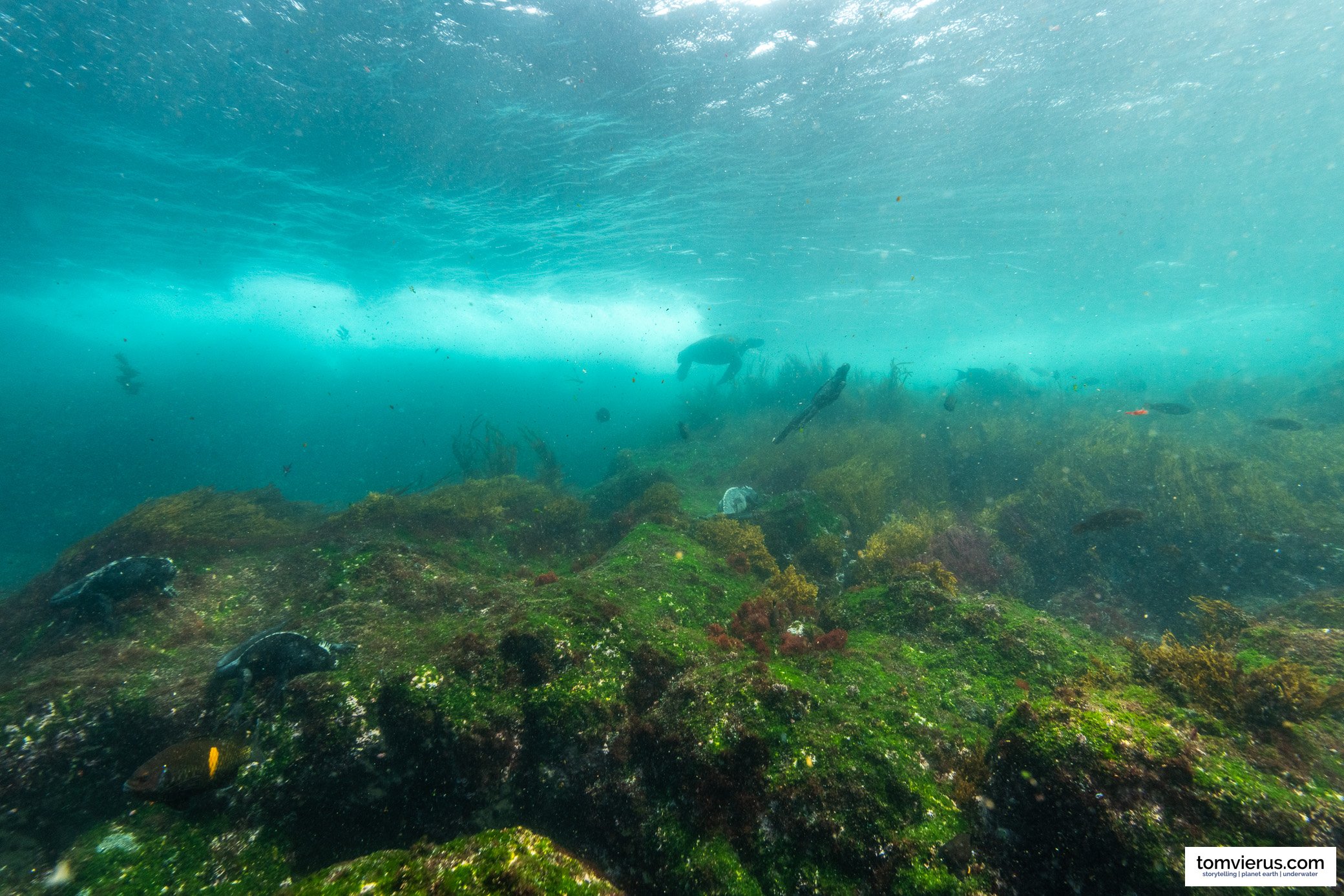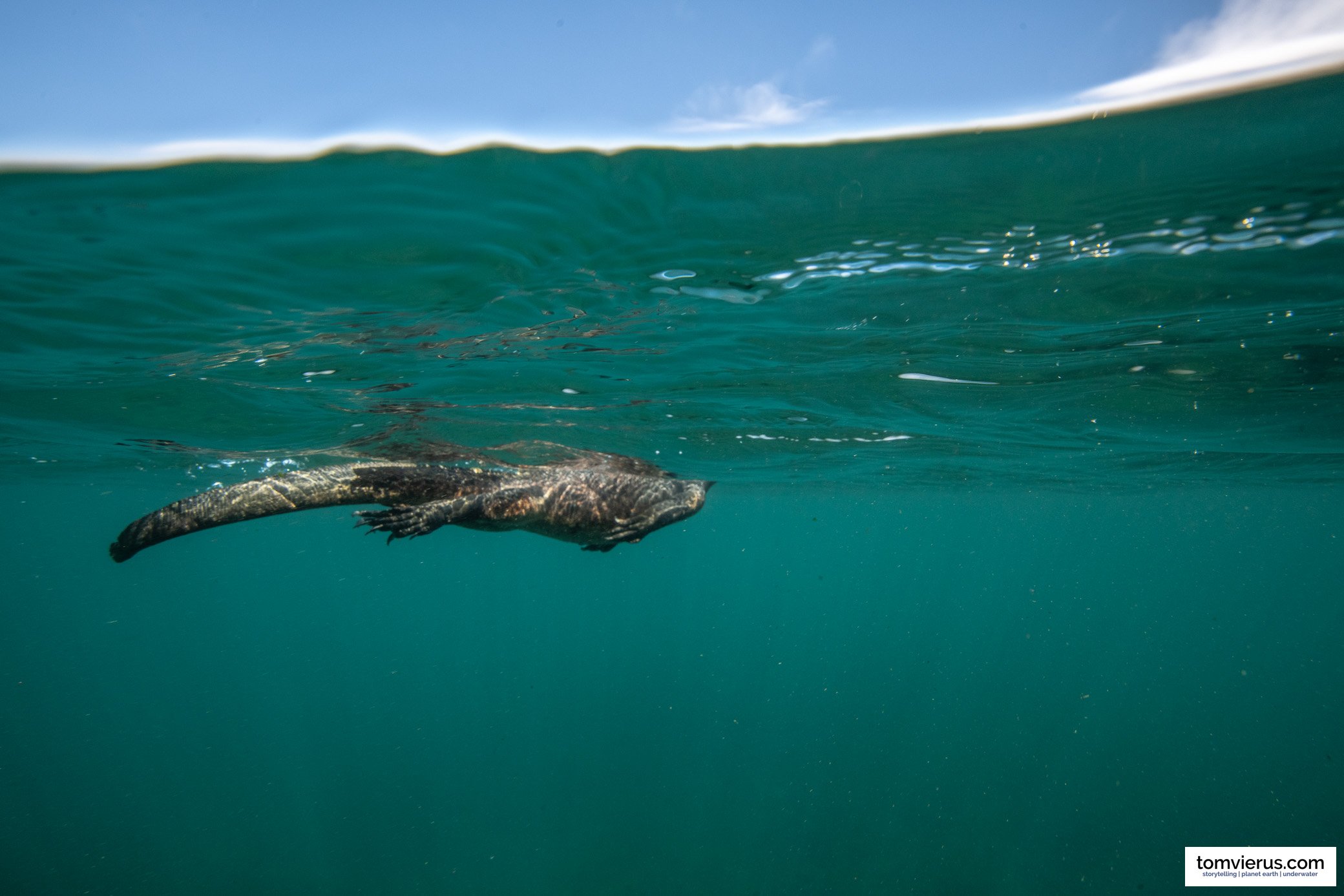Galápagos Diving from a Photography Perspective | Cape Douglas | Part 6
This series of posts is about an 11-day liveaboard trip throughout the Galápagos Islands aboard the Deep Blue with the Master Liveaboard Fleet. Having shot several thousand images, I thought I would share a few more here than on my other social channels, but be sure to check out my Instagram, TikTok, Youtube, and Twitter for more. This part is about diving at Roca Redonda and Cape Douglas. Have a look at the other posts in this series.
The stop before Cape Douglas: Roca Redonda! No visibility and crazy current!
A cool sighting in the morning while we were still steaming towards Roca Redona: an Eden’s Whale (Balaenoptera edeni). Identified thanks to iNaturalist.
Roca Redonda as seen from the boat. Galapagos Archilpelago, Ecuador.
A storm petrel (likely a Wedge-rumped Storm-Petrel, Hydrobates tethys) flies above the ocean surface near Roca Redonda in the Galapagos Islands.
One of the images I took during the dive at Roca Redonda: a school of Sawtail Surgeonfishes (Genus Prionurus).
A Stone Scorpionfish (Scorpaena mystes) lies motionless on a rock near Roca Redonda.
Overnight, we made our way to our next destination: Roca Redonda, a small flat-topped volcanic island about 25km northwest of Isabela Island, the largest island in the Galápagos Archipelago. The main attraction here is the submarine fumaroles, which release bubbles, indicating this volcano is still active. Geoff told us - as almost everywhere in the Galápagos - we could also spot large schools of fish, hammerhead sharks and eagle rays IF the visibility was alright.
As it turned out, that 'if' didn't come true, and I think we had the worst visibility of our entire trip here. We could barely see a few meters, I would estimate between 1 and 3 m on average - and on top of that, Geoff had already warned us that this particular dive would be one of the most challenging of the trip. Due to a strong surge at the entrance part coupled with strong potential currents, we needed to make sure to stay together and immediately descend upon the backroll entrance from the panga. If, for whatever reason, a diver couldn't descend immediately, he/she would likely be carried away immediately and would have to abort the dive on the spot.
Luckily, we all made it down, but due to the strong surge, this whole dive was more a crawling dive among rocks than anything else. In about 15m, we were able to spot the fumaroles releasing the bubbles. Around them, the rocks had white deposits all over them. Unfortunately, my camera was playing up, and I couldn't focus for whatever reason, and thus, I couldn't take any pictures in the first half of the dive. On top of that, the visibility was so incredibly bad that all cameras were pretty much useless.
The end of the dive was pretty cool, though: besides the worst visibility on this trip, this dive also offered what was probably the strongest current we had. Although I couldn't see much of where we were drifting, the last few minutes, including the safety stop, were spent drifting quite fast through the murky waters before surfacing. I really enjoyed this drift but was thinking to myself: I hope this is planned as I could barely make out anything (it turned out, it was planned :-)).
Cape Douglas - Marine Iguanas, Turtles and Flightless Cormorants
A Galápagos Marine Iguana (Genus Amblyrhynchus) feeds on algae during the midday heat at Cape Douglas. These highly adapted iguanas are the only species in the world able to enter the water to feed on algae. As reptiles, they cannot regulate their body temperature and thus need to spend several hours warming up before entering the water around midday to feed for a few hours in the cold waters. Photographed just off Fernandina Island.
A green sea turtle (Chelonia mydas) and several Galápagos Marine Iguanas (Genus Amblyrhynchus) forage in the shallow water.
A Galápagos Marine Iguana (Genus Amblyrhynchus) feeds on algae during the midday heat.
A Flightless Cormorant (Nannopterum harrisi) hunting fish just off western Isabela Island, Galapagos Archipelago. Flightless Cormorants are considered ‘Vulnerable’ by the International Union for Conservation of Nature.
Galápagos Marine Iguanas (Genus Amblyrhynchus) in black and white.
A Flightless Cormorant (Nannopterum harrisi) interested in my dive fin.
A Galápagos Marine Iguana (Genus Amblyrhynchus) swims to the water surface to take a breath near Isabela Island, Galapagos Archipelago.
A Galápagos Marine Iguana (Genus Amblyrhynchus).
After our dive, we moved on to Cape Douglas for two main reasons: to observe the marine iguanas and to find a red-lipped batfish. Marine iguanas are reptiles and thus cannot control their body temperature. In order to warm up, they have to spend time in the sun, and once warm enough, they start foraging on algae in the cold water (around 14-16 degrees here)! We had to be there at the right time, between 11 and 2, to be able to observe them in the water. Apparently, that is the only window when they get in there, and if we were too late, we'd miss them. Luckily, we made it in time and could see hundreds of heads sticking out of the water's surface just meters from the rocky shore.
The idea for this dive was to be dropped in buddy couples from the panga a few meters away from each other to avoid eight people disturbing a single iguana. We drove a few meters from the Deep Blue and dive buddy couple by dive buddy couple bankrolled into the shallow water in the intertidal zone. The depth averaged around 3-5 m, and it only took a few seconds until we found the first marine iguana feeding on red algae. Not to bother them too much, we weren't allowed to use any lights or strobes, and it was also recommended not to get too close and scare them off. To me, this made sense, and honestly (besides the lights) is part of ethical photography in the first place. Study the subject and don't do anything to hurt/distress it while trying to take the images.
It was an amazing dive, and I think I even said the best so far. It is hard to compare the diving at the different sites we had done in the past days as they were all so different and all offered so much in their own way. But the freedom we were given on this dive - to just dive in buddy pairs and take as much time as we wanted (well, as long as it was below 60 minutes) - and the fact that we were surrounded by these incredible, unique animals was just mind-blowing. I get incredibly cold very quickly, but on this dive, it didn't bother me; my adrenalin and excitement were just too hyped up.
Besides all the marine iguanas around us, there were also a few hunting flightless cormorants - incredibly agile birds that have adapted to be incredibly good swimmers. The muscles in their wings have basically wandered down into their legs, making them strong swimmers that have been spotted in more than 40m depth! They are so fast underwater that it was hard to take photos, and it seemed impossible to predict where they'd be swimming next. The ones I observed swam from rock to rock, diving all around them and into any crack they could find. It was an insane spectacle to observe, and what a reminder again of how cool nature is






















